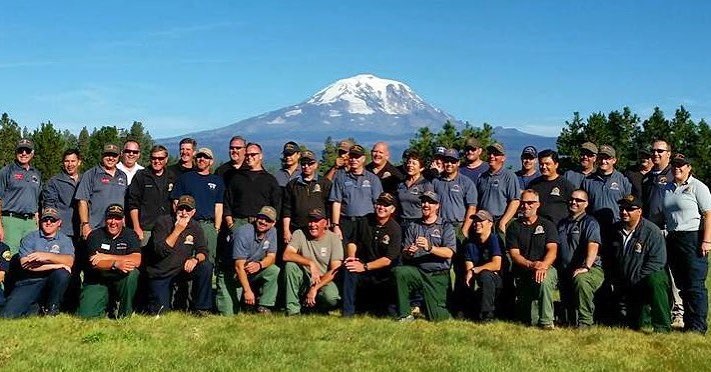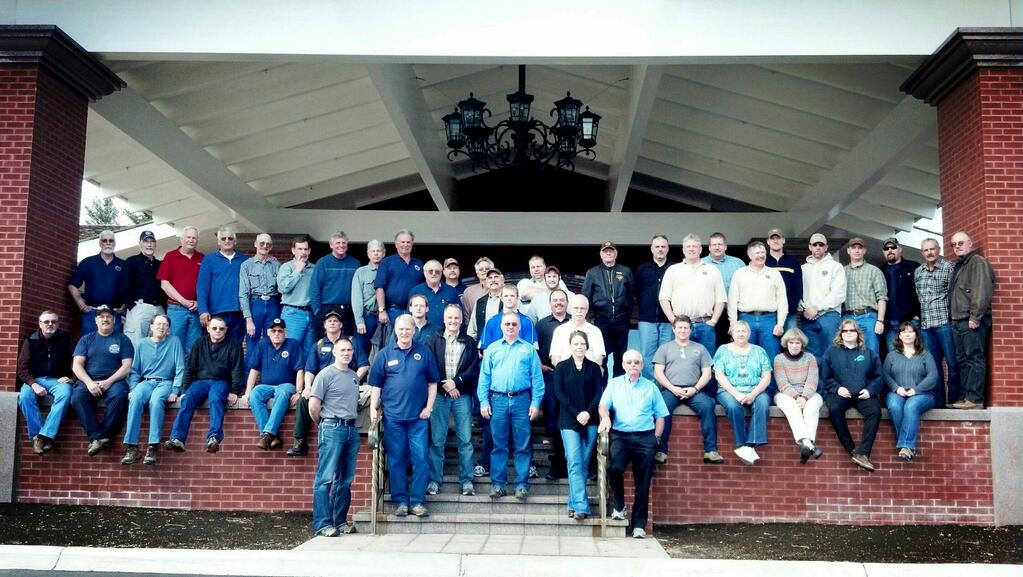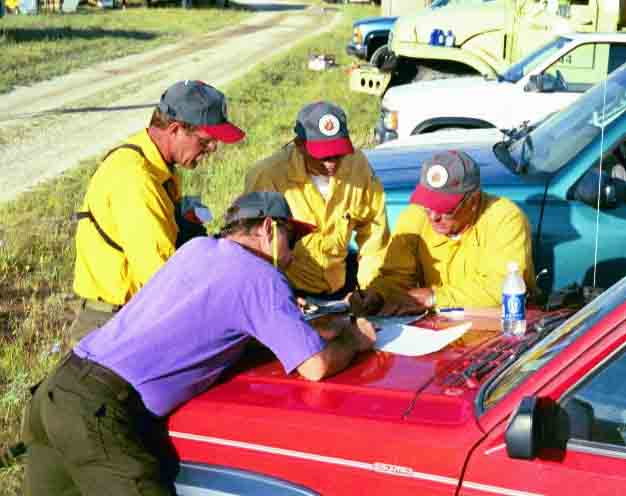
A decade after a similar concept was proposed, the National Wildfire Coordinating Group (NWCG) is being asked again to change the way Incident Management Teams (IMT) are configured. Currently there are three levels, Types 1, 2 and 3, with Type 1 IMTs being the highest qualified. The idea is to combine Types 1 and 2 into just one type, which will be called Complex Incident Management Teams (CIMT).
The Incident Workforce Development Group (IWDG), a working group of IMT practitioners and subject matter experts jointly chartered by the Fire Management Board (FMB), crafted a memo to the FMB asking for the change, in order to address the following:
- Reduced number of IMT participants to fill IMT rosters, impacting the total number of IMTs available nationally;
- Inconsistent use of IMTs due to lack of national IMT rotation management and commitment approval;
- Reliance on Administratively Determined (AD) employees, retirees, and cooperators to staff IMTs without commensurate trainee use; and
- Standardization of the IMT mobilization processes and other criteria across Geographic Areas.
In 2010, recognizing that the workforce management and succession planning for wildfire response was not sustainable, the NWCG chartered an interagency team to develop a new organizational model for incident management. In October, 2011 the NWCG released a 51-page document, Evolving Incident Management — A Recommendation for the Future. (If they issued a companion report, a Recommendation for the Past, we were unable to find it.) The suggestion was to merge all federally sponsored type 1 and type 2 teams into one type of IMT. There would three response levels: Initial attack (type 4 and 5 incidents), extended attack (type 3 incidents managed by type 3 IMTs), and complex incidents managed by Complex IMTs. Wildfire Today’s last update on that proposal was in 2015.
Below is a copy of the memo about the current suggestion. It was signed January 10, 2022 by the two top fire guys in the US Forest Service and the Department of the Interior and sent to the Fire Management Board, NWCG, and the National Multi-Agency Coordinating Group.
(Click on the document above to see at bottom-left how to zoom in or scroll to pages two and three.)
[pdf-embedder url=”https://wildfiretoday.com/wp-content/uploads/2022/01/CIMT_12-13-21.pdf” title=”Complex Incident Management Teams”]
The recently released report about the 2020 fatality on the El Dorado Fire addressed many issues the investigators felt were related to the management of that incident, including the current system for configuring IMTs:
“The same concerns exist for Incident Management Teams (IMT). With the reduction of 39 percent of the Forest Service’s non-fire workforce since 2000, the “militia” available to assist in IMT duties is rapidly being reduced to a mythical entity, often spoken of but rarely seen. The 2020 fire year was simply the latest in a long string of years where we did not have enough IMTs, let alone general resources, to address suppressing fire in our current paradigm. On the El Dorado Fire, Region 5 took a creative approach to ensure Type 1 oversight by grafting a Type 1 incident commander onto a Type 2 team, when no Type 1 teams were available. While this met the need and policy requirements, one cannot help but wonder what the difference really is between a Type 1 and Type 2 team. Why not just create one national team typing system, and why not ensure that it is staffed to a holistic fire management response (see Theme 2) and not just a direct perimeter control response.”
Thanks and a tip of the hat go out to Al.


